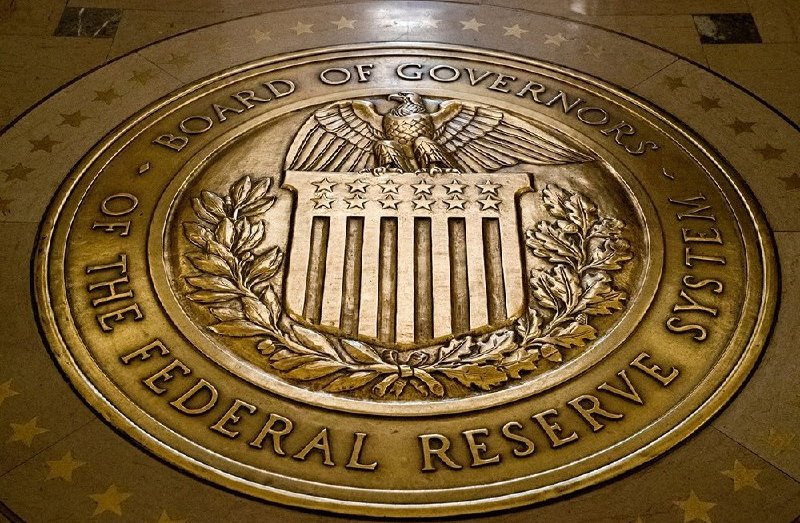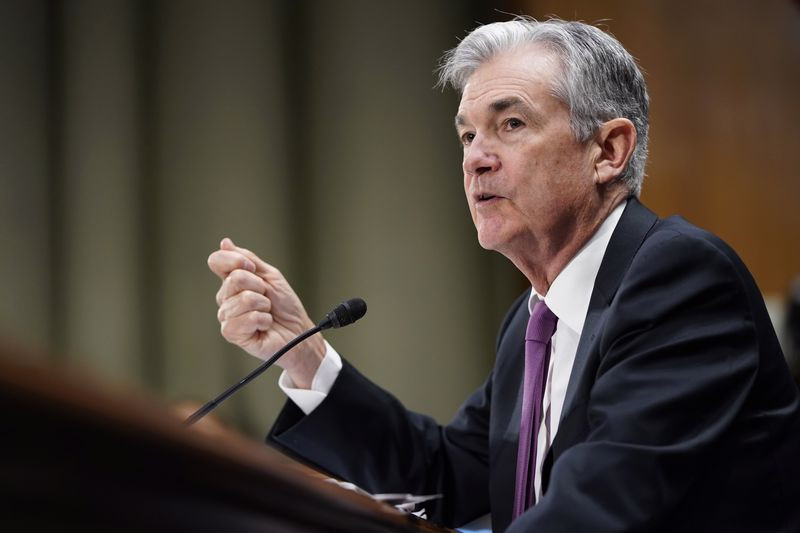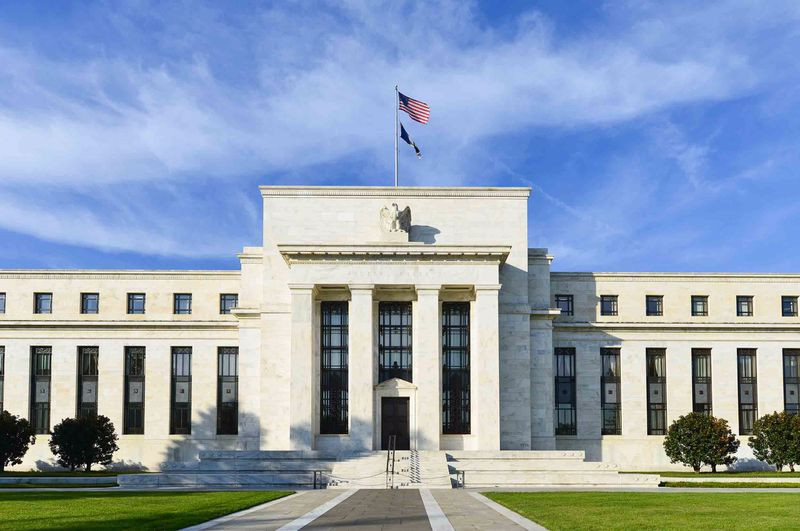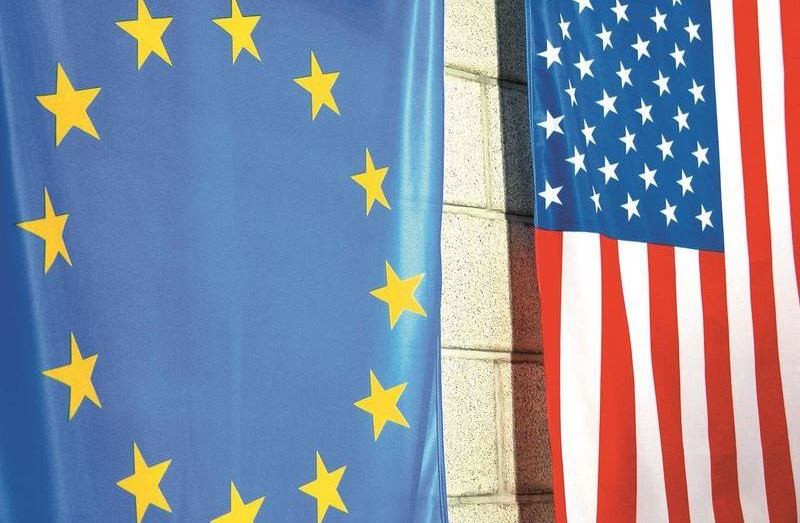On Friday, the single European currency fell by almost 0.7% against its American counterpart to 1.0760. The EUR/USD pair closed in the red zone for the second day in a row.
The pair's corrective movement looked quite natural, given that it had been steadily rising five days in a row, having advanced by 280 pips.
This upward dynamic could be explained by the fact that investors were selling the US currency before the Fed's March meeting.
A year after the regulator launched its campaign to curb inflation by rapidly raising interest rates, it faced a dilemma. On the one hand, the national economy continues to work beyond its capacity, which indicates a further rise in prices. On the other hand, the economy is already beginning to crack, given the banking turmoil that has recently rocked the markets.
Expectations for a rate hike in the United States declined markedly amid the collapse of three regional banks. Prior to these events, FOMC officials were predicted to continue, or even intensify, efforts to raise interest rates and contain inflation.
Worries about the state of the US banking system have cast a heavy cloud over the markets, and uncertainty around the Fed's next decision has been one of the highest since the COVID-19 pandemic led to emergency rate cuts in 2020.
The Fed itself found itself between two fires: the need to reduce inflation and the risks to financial stability.
After analyzing the reaction of the US central bank during past financial shocks, economists at Goldman Sachs came to the conclusion that the regulator will maintain the status quo.
"The historical record suggests that the FOMC tends to avoid tightening monetary policy in times of financial stress and prefers to wait until the extent of the problem becomes clear unless it is confident that other policy tools will successfully contain financial stability risks," they said.
As the wisdom of another round of Fed tightening was called into question in light of the recent turmoil in the banking sector, the US dollar came under heavy pressure.
The US dollar index sank to seven-week lows of 102.70 in anticipation of the Fed's decision on rates.
It was obvious that the regulator had no easy options.
On the one hand, the pause could signal that the Fed sees problems that are not yet visible to the market. On the other hand, the rate increase could intensify the turmoil in the banking sector.
After some hesitation, most investors eventually agreed that the US regulator will increase the cost of borrowing by 0.25% at the next meeting.
At the same time, market participants expected that the regulator could change its hawkish tone to a softer one and were waiting for hints from it about future plans for monetary policy.
Traders focused on updated forecasts of future rate changes.
Strategists at CIBC Capital Markets suggested that the regulator's path of least resistance was to keep its forecasts unchanged. In their opinion, this course of action seemed quite reasonable, given that the risks for the domestic financial sector have increased.
Some experts even admitted that the Fed could suspend the publication of forecasts, as in March 2020, when Jerome Powell said that due to the pandemic, the economic outlook was changing every day, and voicing forecasts seemed a futile exercise.
"In the current environment, issuing forecasts may simply cause confusion rather than bring clarity," analysts at KPMG said.
The Fed, as widely expected, decided to raise rates by 25 basis points.
The median projection of FOMC members for the end of 2023 remained at 5.1%, implying another 25-basis-point rate hike.
At the press conference, Jerome Powell noted that it was still unclear how significant the impact of the credit squeeze on economic activity and inflation would be and what its scale and duration were. Therefore, the Fed will make decisions from meeting to meeting.
Some market participants interpreted the Fed Chairman's words as a possible end to the tightening cycle.
As a result, the US dollar continued to weaken against its major rivals. Last Wednesday, USDX fell by almost 0.7% to 102.20. Meanwhile, the EUR/USD pair added about 90 pips and ended the session near 1.0855.
"It was the most dovish rate hike we could ever imagine. FOMC officials are trying to assess the impact of the sudden tightening of credit policy on growth, jobs and inflation. But it's too soon for a sound judgment. FOMC members appear worried that rate hikes from zero to nearly 5% in just a year might be excessive in the face of financial turmoil. They don't know how much that will do more than they need to cool inflation and chill the economy. Their goal is to chill the economy, not send it into a deep freeze," experts at KPMG explained.
On Thursday, the US dollar fell to 101.60, reaching its lowest level since the beginning of February. However, it then managed to rebound and ended the day with a symbolic rise of 0.07%, reaching 102.25.
Apparently, the dollar bears decided to take profit. Between March 16 and March 22, the US dollar index fell by more than 2%.
In addition, the decision of the US regulator made some investors wonder why it continues to raise rates when risks have increased in the country's financial sector.
Fed Chairman J. Powell partly justified the rate hike by saying that the collapse of Silicon Valley Bank is an out-of-the-ordinary case, and the banking system as a whole remains healthy.
At the same time, the head of the Fed left the door open for further rate hikes if necessary.
"If we need to raise rates even higher, we will," Jerome Powell said.
The Fed will end up dealing more with a strong economy in the spring and summer and won't worry as much about financial stress as it does now, St. Louis Fed President James Bullard said on Friday.
Under such a scenario, the Fed's key rate should rise to 5.50-5.75% by the end of 2023, a range that would require three more quarter-point hikes from the 4.75-5.00% level set by the US central bank at the last meeting.
Federal Reserve Bank of Atlanta President Rafael Bostic noted that the decision to raise the rate was not easy for the regulator.
"There was a lot of debate. This wasn't a straightforward decision," he said.
"At the end of the day, what we decided was that there were clear signs that the banking system is sound, efforts that the Fed took with Treasury and the (Federal Deposit Insurance Corporation) to deal with the difficulties of those banks seem to be working, and with that as a backdrop, inflation is still too high," Bostic said.
"There are clear signs that the banking system is safe and sound. Inflation is still too high, the Fed needs to focus on that. There is confidence that the central bank will be able to cope with the problems of the banking sector. The regulator must take inflation under control. I do not expect the economy to fall into recession," he added.
Positive comments from FOMC officials helped the greenback to extend the previous rebound on Friday. The US dollar index rose by more than 0.5% to 102.80.
At the same time, EUR/USD lost 70 pips after falling by 25 pips on Thursday.
Despite the latest bout of weakness, the euro remained one of the leaders among the G10 currencies in the previous weekly trade.
The euro has posted weekly growth for the fourth week in a row, having gained more than 0.8% against its American counterpart.
Strategists at Nomura believe the euro should benefit from a less hawkish stance of the Fed and the prospect that the ECB will continue to raise borrowing costs.
"We remain long on EUR/USD with a target at 1.1100 at the end of the second quarter and do not view the recent price action as the start of a new trend," they said.
Already at the start of the new week, the main currency pair returned to positive territory as the US dollar came under pressure.
Market participants took notice of the comments by FRB of Minneapolis President Neel Kashkari.
The problems of US banks have increased the risks of a recession in the US, but it is too early to assess their consequences for the economy and for monetary policy, he said over the weekend.
"So far, we cannot say to what extent the problems of banks will lead to a widespread restriction of lending. Will it slow down economic growth? We are following this very, very closely. It's too early to make predictions about the next rate meeting," Kashkari said.
The Fed bears mostly downside risks to the dollar as the lack of clear communication leaves the door open for dovish speculation, ING economists said.
"US borrowing costs are expected to fall by about 90 basis points starting in July, and the Fed's ambiguous messaging is doing very little to counter those expectations," they said.
"While we remain of the view that the EUR/USD pair is rising amid monetary policy divergence, a warning was issued last Friday not to jump to conclusions that this banking crisis is turning into history for the US only – and therefore into a straight-line bullish trend in EUR/USD," ING added.
"However, the pair's push towards 1.1000 in the coming weeks remains a very tangible opportunity. This week, a retest of the 1.0900 level will already be a very encouraging sign for the EUR/USD bulls," the bank's experts believe.
On Monday, the major currency pair advanced by 0.3% and approached the level of 1.0800.
Meanwhile, the greenback was losing about 0.2%, hovering around 102.60.
On the one hand, USD is forced to retreat as concerns over the health of the global banking sector are weakening.
The euro's latest bout of weakness was fueled by concerns that the recent series of bank failures would spill over to Deutsche Bank after the cost of bank failure insurance soared.
"We continue to lean towards the view that the recent banking problems are attributable to a few specific banks. Concerns about systemic risks are exaggerated," specialists at Danske Bank are sure.
"We are relatively calm given Deutsche Bank's strong capital and liquidity positions. We have no concerns about Deutsche Bank's viability or asset marks. To be crystal clear, Deutsche Bank is not the next Credit Suisse," strategists at Autonomous Research said.
On the other hand, uncertainty about the Fed's next steps is helping USD to stay afloat.
Analysts at Credit Agricole do not recommend selling the dollar until the Fed finishes raising rates.
"Analysis of USD dynamics during the last six Fed tightening cycles since 1980 has shown that investors should not sell the dollar until the regulator finishes raising rates. The fact is that the combination of the Fed's continued rate hike and increased recession risks have given the greenback a moderate boost," they noted.
If the dollar bulls fail to regain control of the situation, the greenback could challenge recent lows in the area below 102.00 (dated March 23). Additional losses could bring the pair to the low of 100.80 (Feb. 2).
"If USD breaks below 100.80, the downtrend is likely to intensify. The next potential support lies at 100.00 and then at 98.90," Societe Generale said.
Markets are likely to remain subject to short-term bouts of uncertainty, which will support the dollar as a safe-haven currency. However, the long-term outlook for the greenback remains in doubt as interest rates narrow on both sides of the Atlantic, Scotiabank economists say.
"Credit tightening will slow business investment and growth, and we still think there is a risk that US inflation will start to decline more obviously in the next month or two. The Fed might have one more hike in it but it's not at all clear that there is another 75 bps of tightening ahead," they said.
EUR/USD has stabilized after finding support at the lower boundary of the 1.0700-1.0800 range. The pair could start another upside cycle on a breakout above 1.0785, according to Scotiabank.
"The rise of the euro above $1.0785 will give the bulls a little more strength. The key resistance is the $1.0930 area, the high of the last week," the bank's specialists said.














